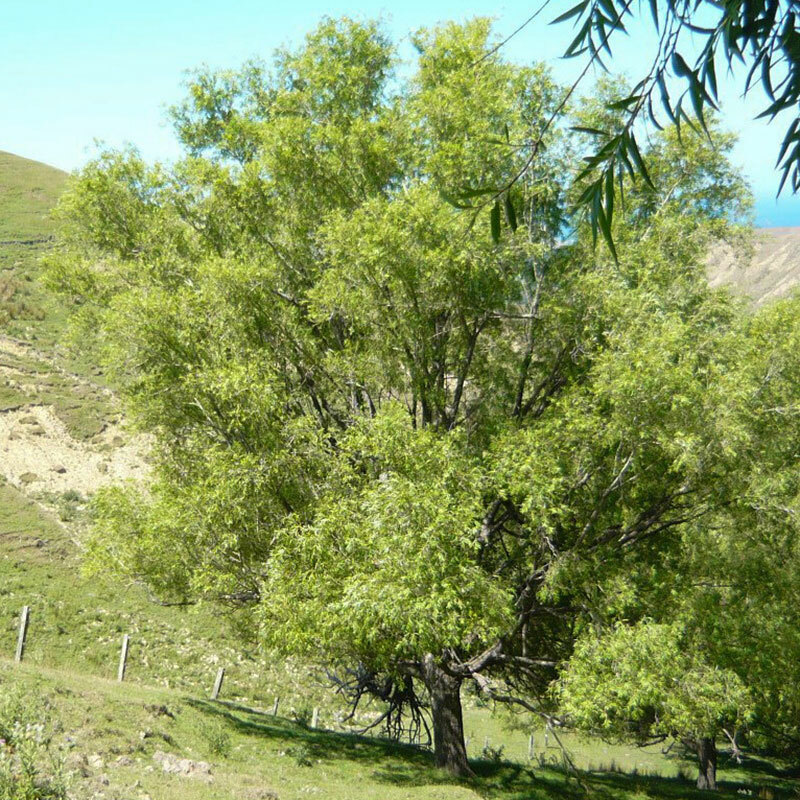Newsletter No. 2 June 2024
Posted on June 04, 2024
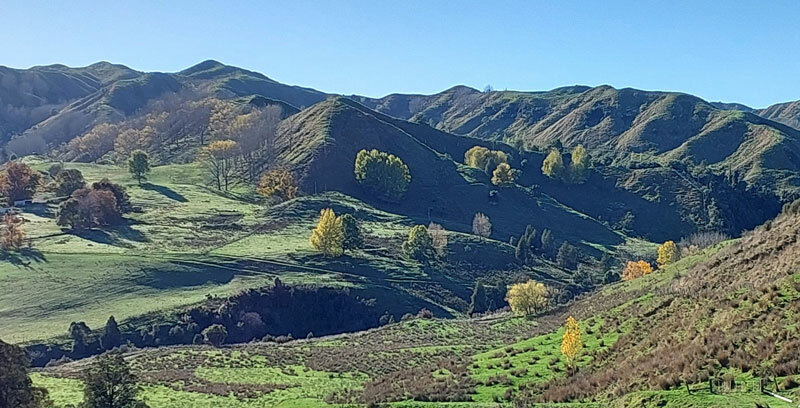
Welcome to newsletter number 2. It has been a bit of a tough autumn for many of us, especially here in the Manawatu, still waiting for the autumn rains, whilst others around the country appear to be over the rain. One thing for sure, the poplar and willow trees in their autumn colours are a wonderful sight. Enjoy the read.
Meet Tim Forde, our new Trustee

In November we said farewell to our long serving farmer Trustee, Tom Mandeno. Tom farms sheep and beef north of Raglan. Although we have lost Tom as a Trustee, he remains an Ambassador (full list of our ambassadors).
Tim joined us at our May meeting. Tim and his wife Cathie farm at Elsthorpe, Hawke’s Bay. Tim has a variety of established poplar plantings, the offer of leaf fall to stock as fodder and a source of timber. The poplar timber is used for toys, furniture, polo mallets, battens, post, truck decking and general timber. Tim also has an established nursery of rooted poplars, selling around 10,000 per year. Read more about Tim or any of our other Trustees.
Willows protecting communities
Daniel Harrison (Taranaki Regional Council and Trustee)
Mention the term ‘flood protection’, in the context of rivers, and most people think of stopbanks and floodwalls. However, flood protection and river control in New Zealand is often a complex system of river training and erosion control, with the stopbanks and floodwalls being the last line of defense. Many NZ rivers are dynamic, with an ever changing morphology due to highly erodible banks. Without robust riverbank protection, the stopbanks that protect communities from flooding would simply wash away, with potentially catastrophic consequences.
The humble willow is the underrated hero in the NZ flood protection toolbox. Willows have a root system like no other tree. Willow roots hold river banks together and the shrubby vegetation slows river flows, so stopbanks are protected and are able to perform during large floods.
Willows are able to provide this essential protection within just a few years of being planted – whereas other trees will take decades to offer any protection at all, and then still not perform at the same level as the humble willow.
Thousands of people and their homes in dozens of towns and cities, and thousands of hectares of productive farmland, market gardens, vineyards and orchards rely on the protection provided to riverbanks and stopbanks by willows. There is no realistic alternative. Other trees will not do the same job, and hard protection, such as rock, is significantly more expensive – making alternatives either inadequate or unaffordable or both.

Willows perform an invaluable role for flood protection in NZ. They literally save lives.
Willows also provide a plethora of environmental benefits – providing shade, food and habitat. In most situations native trees and willows can grow together quite happily – providing all the bioengineering benefits of the willows and the biodiversity of the natives.
It is important to note though, not all willows are created equal. Modern willow clones that have been bred through the NZ Poplar & Willow Research Trust and other international breeding programmes make river management easier, cheaper, and more effective than some of the older varieties that were brought to NZ more than a century ago.
With over 300 varieties of willow in NZ, it’s easy to see that some will perform better than others, while some will not be suitable at all. Mention the word ‘willow’ and some people will automatically think of legacy issues of choked waterways and invaded wetlands. These issues are usually caused by Salix fragilis (crack willow) or Salix cinerea (grey willow) – two old varieties that give willows a bad name. Modern varieties don’t seed and have supple branches that aren’t prone to break off and spread.
Most flood control schemes are managed by regional councils. However, the NZPWRT and your regional council staff can provide you with advice on choosing the right variety for your situation and climate, and how to manage your river system to reduce riverbank erosion and flood risk using fit-for-purpose modern willow varieties.
Storage and Handling of poles
As we start to head into pole planting season, poles can be delivered anytime from June onwards depending where in the country you are. Now is a good reminder as to how to care for your poles when they arrive at your property.
- Plant as soon as possible (within 1-2 weeks of arrival ideally) and make sure the poles do not dry out.
- Poles if soaking should be in fresh water (not stagnant). The butt end should be in the water between 200-450 mm (8-18inches). If poles are left to soak for longer, roots can develop and these will be lost during planting.
- Alternatively, poles should be unbundled and laid in long grass in the shade, out of wind and away from stock. Keep damp by routinely sprinkling with water. This enables poles to build up a reservoir of water, which it used to grow root in the following months.
- If in any doubt, please contact your Regional Council LMO.
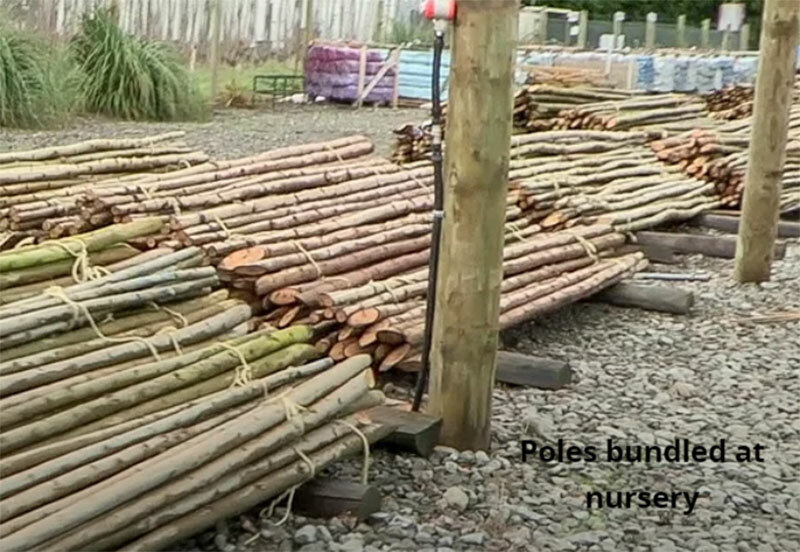
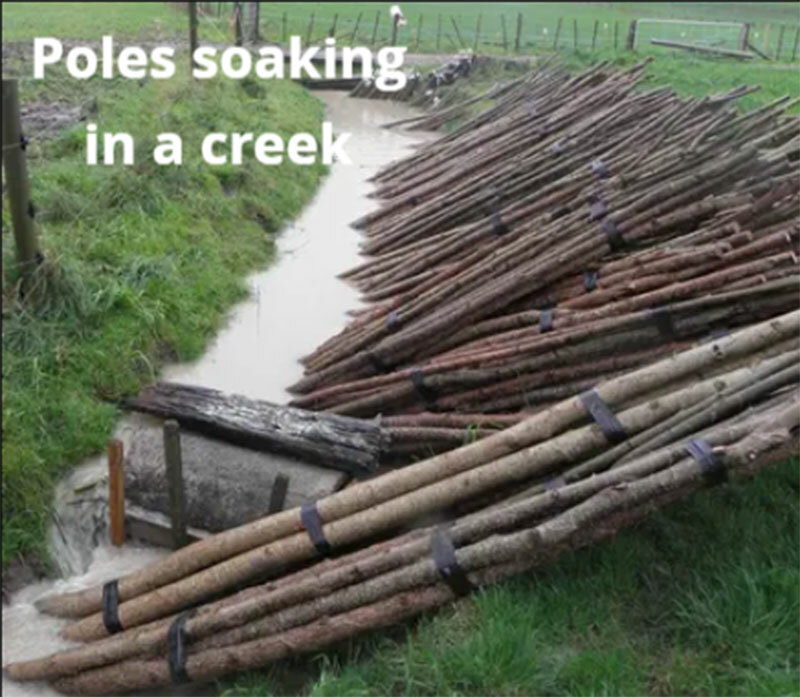
Research Programme
NPWRT mission is “to ensure New Zealand pastoral landscapes and communities are protected, enhanced and resilient.” We have four key focus areas:
- Breeding and commercialisation of novel poplar and willow clones.
- Maintaining and enriching the genetic resource of these species.
- Research root-soil interactions, tree management for multiple uses.
- Providing information and applications of poplar and willows.
In a survey undertaken with Regional Councils and Unitary Authorities a few years ago the following attributes were rated as the top 10 for poplar and willow.
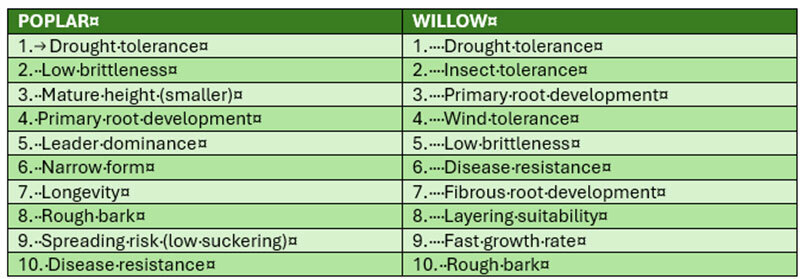
In order to breed for these attributes, it takes time as shown below. Combining clones with known traits, selecting for the positive attributes. At each phase of the research process, only those clones that meet the criteria are selected. An example of this is that 54 seedlings were selected from 2020 willow clones, with 270 cuttings planted for field evaluation. 13 clones were selected from 2018 willow crosses, and 8 clones were then put out to trial.
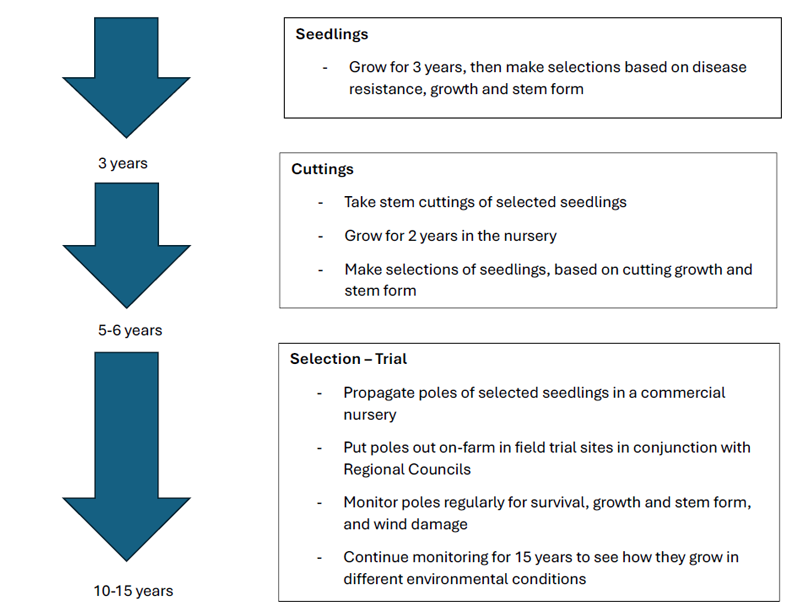
A lot of the field work continues with monitoring of trial sites that were planted back in the 1980s and 1990s, measuring form and survival.
The NZPWRT has a Technical Advisory Group (TAG), mainly representatives from the Regional Councils and Unitary Authorities that represent the Land and River Managers. They provide feedback into the research required and make recommendations to the Trust as well as communicating outcomes back the Councils.
National Field days at Mystery Creek
Pop along and say ‘Hi’. We will be at Mystery Creek again this year, teaming up with NZ Farm Forestry on site G80 at the Forestry Hub (between Gate 1 and Gate 2). We would love for you to stop by and have a chat.
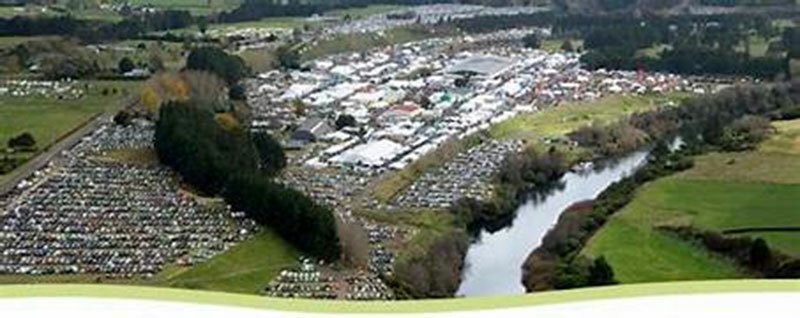
Showcasing … Tangoio (willow)
Tangoio was first released commercially in 1975, specifically for farm soil conservation and horticultural shelter. It is suitable for sites that are affected by high winds. As a female clone it should not be planted where seedling establishment could be a problem.

Tangoio has an excellent shoot to root ratio and is ideal for slope and gully erosion control. It is relatively dry-tolerant. This tree can be pollarded since it produces many stems and foliage. It has light green leaves approximately 9-14 cm long and 1-1.7 cm wide, with serrated edges.
